Textbooks are SEXIST, say woke scientists – so, would you be offended by these descriptions of men and women?
From ‘Charlie and the Chocolate Factory’ to ‘The Tiger Who Came for Tea’, woke campaigners have taken offense to many beloved books.
Now scientists claim that even our textbooks are sexist.
Researchers from the British Center for Global Development analyzed the content of 1,255 textbooks from 34 countries around the world.
They found that the textbooks mentioned women half as often as men, and were much less likely to describe their careers and achievements.
So would you be offended by these descriptions of men and women?
Researchers have revealed the most common descriptions of men and women from school textbooks around the world. Do you find these descriptions sexist?
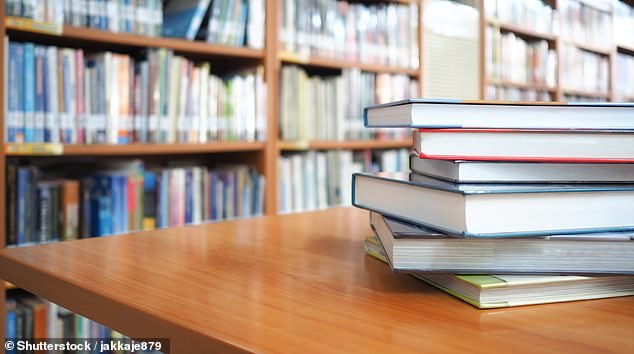
Researchers analyzed the content of textbooks to see how often masculine or feminine terms were used and to understand what types of expressions they were commonly used with (stock image)
The textbooks analyzed in the study were from subjects ranging from economics to agriculture, and covered years four to thirteen (ages eight to eighteen).
The researchers then compared the content of each textbook with a list of gendered names and pronouns – such as “he”, “she” or “aunt” – and looked at what types of sentences these words were used in.
Lead researcher Lee Crawfurd told MailOnline: ‘Our research shows that girls are systematically underrepresented in school textbooks around the world, and depicted in traditionally stereotypical roles.’
The researchers also found that the terms used to describe men and women tend to reflect traditional gender stereotypes.
The most common adjectives used to describe female characters were ‘married’, ‘beautiful’, ‘elderly’ and ‘quiet’.
Men, on the other hand, were most often described as ‘rich’, ‘wise’ and ‘confident’.
For verbs, the most common words associated with women were “baking,” “cooking,” and “singing.”
The verbs most commonly used to describe men were ‘rule’, ‘guide’, ‘draw’ and ‘order’.
However, Mr Crawfurd says: ‘It’s less about certain egregious examples or sentences, and more about these consistent patterns of representation.’
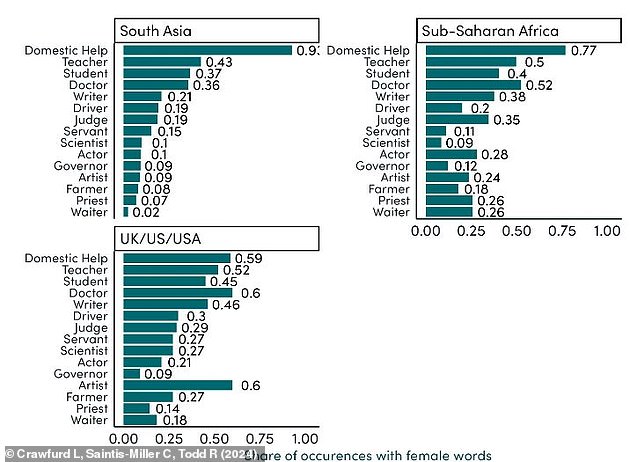
An analysis of 1,255 textbooks from around the world found that of the 15 most commonly mentioned jobs, women were much more likely to be described as domestic workers, teachers and students.
For example, the study found that feminine words were much less likely to be associated with terms relating to performance and work, and were more likely to be associated with terms referring to personal appearance and the home.
Where women’s jobs are mentioned, the most common form of employment was ‘domestic worker’, ‘nurse’ and ‘religious official’.
In contrast, the jobs that most often appeared next to masculine-gendered words were “physicist,” “mathematician,” and “salesperson.”
In all countries surveyed, men were mentioned more than twice as often as women.
In Afghanistan, Pakistan, Sri Lanka and South Sudan, where women were least represented, fewer than one in three gender-related words referred to a woman or girl.
The country where women were mentioned most often was Zimbabwe, where textbooks use more feminine terms than masculine terms.
This was followed by Kiribati and Kenya, which had a slight tendency to use more feminine terms.
But as the researchers note, the seven countries that list women most all receive a large share of their textbooks through donor projects.

While women were more often described as domestic helpers or nurses, textbooks most often referred to men as physicists or mathematicians (stock image)
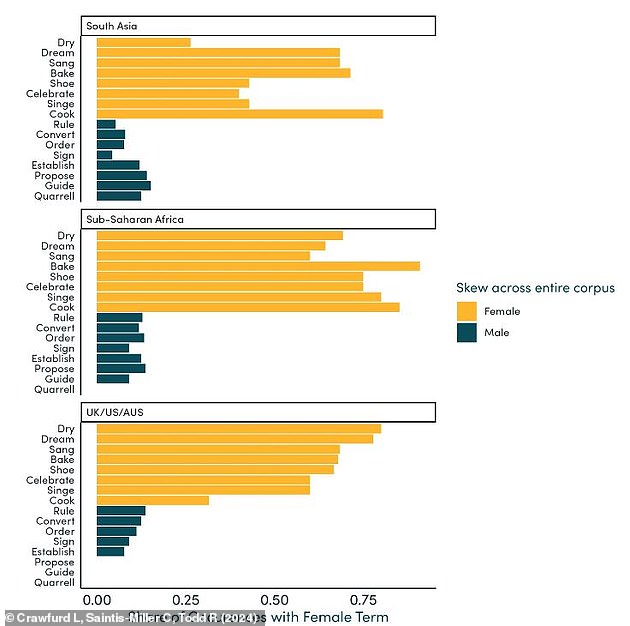
In textbooks, the verbs most often associated with women were mainly domestic. These include terms like ‘baking’, ‘cooking’, ‘drying’ and ‘singing’
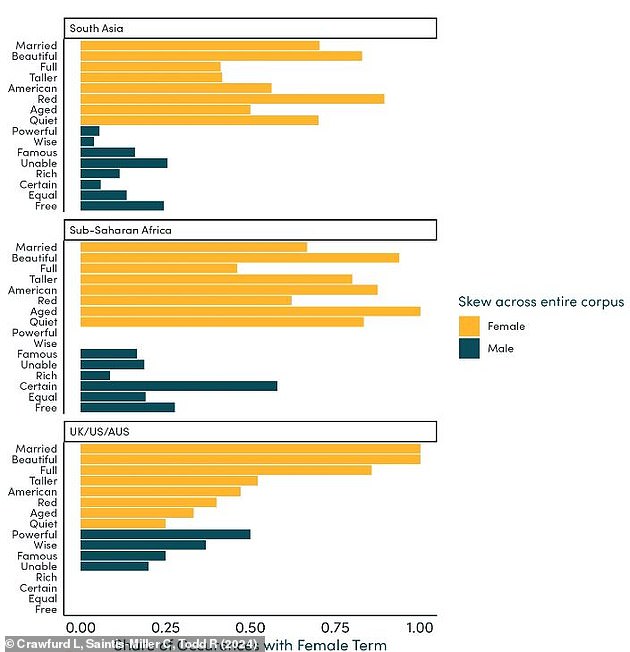
Textbooks were more likely to use adjectives that focused on women’s personal appearance rather than their success or jobs. While men were described as ‘wise’ or ‘wealthy’, women were more likely to be described as ‘married’ or ‘beautiful’
Excluding countries with donor-provided textbooks, Britain was the country where women and men are referred to most equally – although masculine terms are still more common.
In general, countries with textbooks that contained more female characters had stronger GDP and more legal rights for women – although the researchers couldn’t say whether this was just a correlation.
The researchers also found a difference between subjects in the extent to which women or men were mentioned.
Home economics was the subject in which women were most mentioned, with some textbooks using feminine terms up to 70 percent of the time.
This was closely followed by physical education, where masculine and feminine terms were used almost equally.
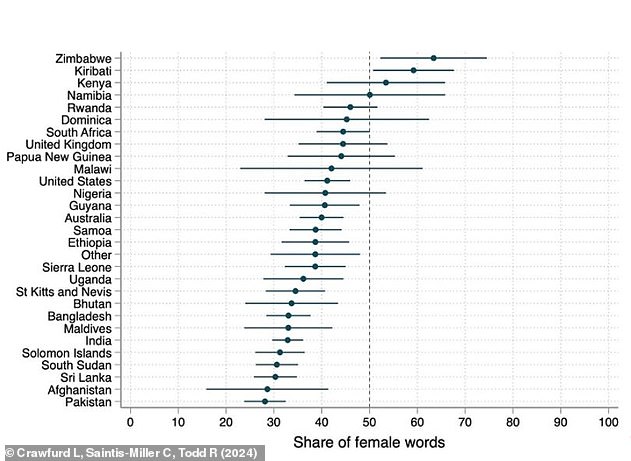
The seven countries where textbooks refer most to women all receive a large proportion of their books as donations. Taking these factors into account, Britain is the country where men and women are most equally referred to
Meanwhile, religion, humanities, science and business were the topics in which men were most mentioned.
While these differences may seem insignificant, Mr. Crawfurd argues that the presence of these subtle biases has a real impact on students’ lives.
“Millions of girls and boys around the world are denied opportunities because of regressive gender norms and rigid stereotypes,” Crawfurd said.
‘It’s clear that there are many other influences on standards besides textbooks, but this is a simple adjustment that can be made and could provide some benefit.’
Across the world, educational materials and children’s books have become an increasingly controversial topic for campaigners on both sides of the political spectrum.
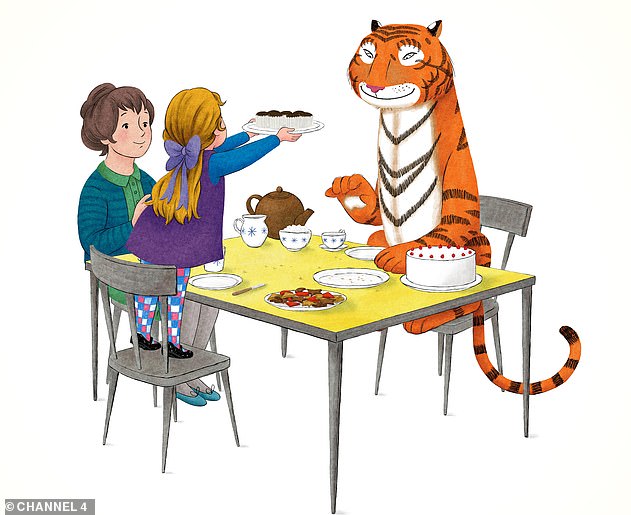
Campaigners have criticized The Tiger Who Came to Tea (pictured) for perpetuating gender stereotypes. The researchers say the content of educational materials can have a real impact on children’s lives
Some groups have taken offense to classic works like The Tiger Who Came for Tea because they perpetuate gender stereotypes.
Meanwhile, school boards in Florida have banned several textbooks for mentioning “critical race theory” or “social justice issues.”
Although their goals are different, both groups are motivated by the concern that exposure to content in the classroom can influence young people’s life choices.
In response to these findings, Mr. Crawford and his co-authors are calling on policymakers and educators to address gender disparities in textbooks.
In their paper, published in PLOS ONE, they argue that this would remove “outdated gender stereotypes” from the classroom and help broaden students’ horizons.
Mr Crawfurd concludes: ‘The changes that can be made are simple; ensuring that the stories and illustrations used in books show boys and girls in different roles.”
